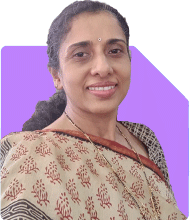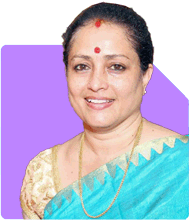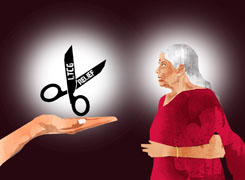I am 28 years old and my current in hand salary is 1.4 lakhs monthly with 15% variable pay. I currently have one home loan of 17 lakh pending with 8.3 ROI for which I pay 26k EMI each month and some 7 lakhs additional to pay to my friend for which I pay 50000 monthly to him of my salary. I have 20k of monthly EMi paid to MFs and have 5 lakhs in PPF and EPf another 3 lakhs. In stocks I invested 1.38 lakhs of which it is currently amounted to 1.6 lakhs . Also I pay 18k to office health insurance for me and my parents. Also I invested in post office RD for which I pay 2500 each month. What else I can do to increase my expenses and improve my funds allocation . Please suggest and around 40k is my average expense each month.
Ans: You are doing well managing multiple commitments. Let’s work together to find ways to improve your fund allocation and reduce unnecessary expenses. I will offer a 360-degree view of your situation and provide clear next steps for your financial health.
Here’s my detailed assessment and suggestions:
Income and Existing Expenses
Your monthly in-hand salary is Rs 1.4 lakhs.
Variable pay is 15%, so monthly income may vary.
You have a home loan of Rs 17 lakhs. The EMI is Rs 26,000 per month.
Rs 50,000 goes to your friend for repayment.
Rs 20,000 is for EMIs linked to mutual funds.
Rs 2,500 goes to a post office RD.
Rs 18,000 covers health insurance for you and your parents.
Rs 40,000 is your monthly household expense.
Your total fixed outflow per month is around Rs 1.56 lakhs.
This is already more than your in-hand income.
Your debt repayment is high at Rs 76,000 (EMI + friend loan).
Your investments are mostly in mutual funds, stocks, PPF, EPF, and RD.
Debt Repayment – Key Focus
Your biggest monthly expense is repaying loans.
Home loan EMI is okay as it builds an asset.
The friend loan at Rs 50,000 per month is high.
Work on repaying this loan as soon as possible.
This will free Rs 50,000 each month.
After that, you can divert funds to investments and savings.
Avoid taking fresh loans.
Avoid personal loans or credit card debt.
Health Insurance – Critical Review
You pay Rs 18,000 to office health insurance.
This is good, as it covers you and your parents.
Check if this policy has good coverage for parents.
If not, consider adding a separate health plan for parents.
Parental health cover can be expensive in old age.
Keep health insurance cover active for any future medical needs.
Mutual Fund Investments
You are paying Rs 20,000 EMI to mutual funds.
This looks like an SIP linked to a loan or some systematic investment.
If it is SIP, then good, as SIPs bring discipline.
SIPs in mutual funds can help you create long-term wealth.
If you are investing in direct mutual fund plans, note this:
Direct mutual fund plans have no commission.
But they give no personal service or expert advice.
Regular mutual funds give you access to an experienced Mutual Fund Distributor (MFD) who can offer guidance.
A MFD with Certified Financial Planner credentials can help you make better decisions.
They monitor your funds and suggest when to switch or rebalance.
Direct funds don’t give these services, which can lead to poor fund selection or exit at the wrong time.
So, for your next SIP, invest through a MFD to avoid mistakes.
For existing mutual fund EMIs, check if the fund is performing well.
If not, consider switching to a better performing fund.
Stock Investments – Small, but Good Start
You invested Rs 1.38 lakhs in stocks. Now, it is Rs 1.6 lakhs.
This is a gain, which is good.
Stocks can be volatile, so limit exposure to direct stocks.
Build stock exposure only after securing debt and other goals.
For most of your future investments, use mutual funds.
PPF and EPF – Strong Foundation
You have Rs 5 lakhs in PPF.
You have Rs 3 lakhs in EPF.
Both are safe and long-term wealth creation tools.
Keep contributing to these funds regularly.
PPF is a tax-free and secure way to save.
EPF is linked to your job, so keep that active.
These can be your fallback emergency and retirement funds.
Post Office RD – Recheck the Fit
You are investing Rs 2,500 in a post office RD.
RD gives safe returns, but the returns are low.
RDs are good for short-term saving only.
If you don’t need RD soon, consider stopping it.
Instead, increase your SIPs in mutual funds for higher growth.
Focus on Emergency Fund
Your current EMIs and loan repayments are high.
You have no mention of an emergency fund.
An emergency fund can be 6-9 months of expenses.
In your case, around Rs 2.5 to 3 lakhs is a good starting point.
Build this fund in a liquid mutual fund or a savings account.
Don’t use direct mutual funds. Use a MFD to find suitable liquid funds.
This will give you a cushion if there is a job change or crisis.
Retirement Planning – Early Start
You are only 28 years old, which is good.
You have 30+ years to plan for retirement.
Your EPF and PPF are the first pillars for retirement.
Once your debt load comes down, increase SIPs.
SIPs in actively managed mutual funds can grow your retirement kitty.
Avoid index funds, as they don’t have active monitoring.
Index funds just copy the market and can give average returns.
Actively managed funds have fund managers who pick good stocks and remove bad ones.
This active approach can give better returns than index funds.
So, avoid index funds and focus on actively managed mutual funds.
Goal-Based Investing – Secure Your Future
Start investing based on your life goals.
Common goals can be home purchase, kids’ education, and retirement.
Write these down. Assign a rough amount and year to each goal.
Allocate investments for each goal.
Use short-term funds for goals in 3-5 years.
Use long-term funds for goals above 7 years.
For medium-term goals, balance funds can help.
Tax Planning – Don’t Miss Out
Use tax-saving options well.
Your PPF and EPF help you under Section 80C.
ELSS mutual funds can also give tax savings and good growth.
Avoid insurance-linked investments for tax saving.
Pure term insurance is good for protection.
Life Insurance – Protection First
No mention of life insurance cover.
If you have dependents, buy a pure term life cover.
This will secure your family’s future.
Avoid investment-cum-insurance plans. They give low returns.
Pure term cover is low-cost and high-cover.
Cash Flow and Expense Optimisation
Your monthly expenses are Rs 40,000.
Try to track these expenses for any wastage.
Use apps to track spending.
Small cuts in spending can help save more.
Prioritise loan repayment first.
After loan to friend is cleared, divert that Rs 50,000 to SIPs and emergency fund.
Debt Priority – Clear Friend Loan
The loan to your friend has no tax benefit.
Clear it fast. After this, use that amount for investing.
Debt-free status brings peace and better cash flow.
Mindset Shift – Future Ready
Keep a positive outlook.
You are young and have time on your side.
Focus on steady, consistent investing.
Avoid speculation in stocks.
Avoid get-rich-quick schemes.
Follow a plan with discipline.
Periodic Portfolio Review – Important
Review your investments every 6 months.
A Certified Financial Planner can help here.
They review your goals, returns, and risk level.
This ensures you stay on track.
Avoid making sudden switches based on market noise.
Finally
Your current situation has heavy loan outgo, but you have assets like PPF and EPF.
The first step is to finish the friend loan.
Next, build an emergency fund.
Then, focus on increasing mutual fund SIPs.
Avoid direct funds. Use regular funds via a trusted MFD.
Don’t go for index funds.
Keep a separate health cover for parents if needed.
Buy term life insurance if you have dependents.
Track expenses for leaks. Small changes make a big difference.
Keep reviewing and adjusting every six months.
You are doing well by starting early. Small steps now will secure your future.
Stay focused and consistent.
Best Regards,
K. Ramalingam, MBA, CFP,
Chief Financial Planner,
www.holisticinvestment.in
https://www.youtube.com/@HolisticInvestment
















.jpg)







